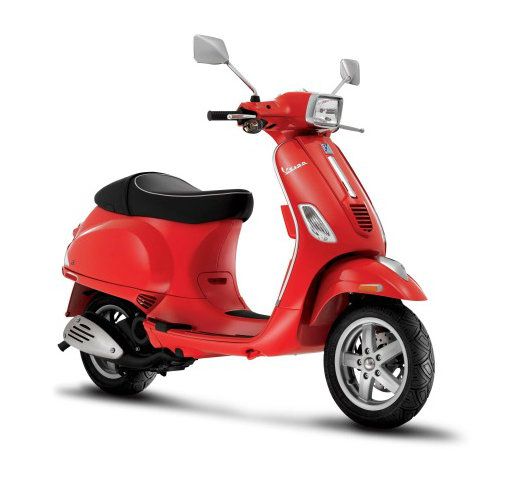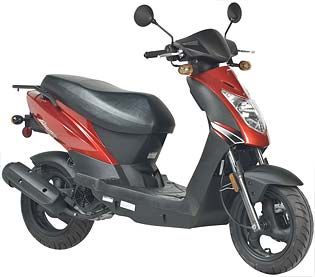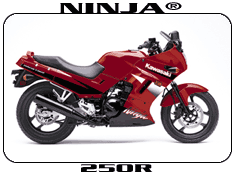At some point, the cost of gasoline will be so high that you (YOU!) will have to decide whether to move closer to your job or to get a job closer to where you live, and deal with either set of consequences. Many people are delaying that decision any way they can, including switching from a fuel-hungry SUV to a compact car, or going to carpool or public transit. I have found public transit to be very inconvenient, to the point of costing a couple hours each direction, which works out to 3-4 hours of lost wages per day compared to driving. Are you really saving that much gasoline compared to slower but more efficient personal transport? A used Geo Metro is a miserable car that gets around 45 mpg. It keeps the rain off.
What if that's not good enough, if the roads between you and the job are so bad the Metro won't do it? Well, there's Enduro motorcycles, with knobby tires and long travel suspensions. Long travel means how much the wheels go up and down to absorb bumps. If your roads are still paved, but you can see in the future they won't be, say 2-5 years from now, perhaps your answer is Geo Metro now, Enduro motorcycle in the future. In 2-5 years, what will gasoline cost?
You and I, here in the USA, are looking at a sort of energy apocalypse. It's not the end of the world, per se, just very unpleasant circumstances. Fuel is merely $4.50/gal now. It will be more in time. Regardless of who wins the presidential election in the coming weeks, gasoline prices will keep rising. If you lose your job, or the business goes under because too many people can't adjust to fuel prices rising too fast or it just stops making sense to work there when you're spending your whole paycheck on fuel to get there, well... things change in bigger ways, not smaller ones. At some point, deliveries to your local station drop off because people are buying less fuel because they have less money to buy fuel with, and they're working closer to home because commuting costs too much to afford anymore. That's a big change. At some point, gas stations will get deliveries then be out for the next 5-10 days. It has happened before, in the 1970's thanks to OPEC embargos.
So someday you'll find yourself with a 5-10 mile commute to your local minimum wage job and no gasoline for your Geo Metro. Hop on a bicycle. You have a bicycle right? I recently bought a full suspension mountain bike at a garage sale for $35. Turned out it was too small for me, but I expect I'll find something like it my size eventually at another sale. These things turn up. The bike was only $100 new, made for a teenager. The front shocks were actually just springs and pistons, not real shock absorbers. It did the job for bumps well enough, and should be less maintenance than a real suspension would. Imagine that for yourself. You really get your heart pumping riding a bike 5-10 miles. If it doesn't kill you, you'll get stronger and healthier, though if your job is physical labor it may be somewhat painful to get through then have to bike home another 5-10 miles.
This is where the scooter comes in. A 49cc 2-stroke scooter is around 3-6 HP, gets 100 mpg or so, and takes about 5 minutes to warm up. With a fully automatic (CVT) transmission, it comes with lights and turn signals, no pedals for you. No hard breathing required, though the engine is loud. Its twist and go throttle. Takes 5 minutes to learn to use one if you've ever ridden a bicycle. All of them are made in China, so don't get up in arms about Italian ones being better. They're all the same. The difference is you pay for warranty coverage with the Italian ones, and name brand markup. I can't stomach paying $4500 for a Vespa, no matter how cute they are. They're wrapped in plastic, not steel. They won't last any more than a Kymco (Taiwan) or other off-brand model.
The Kymco Agility 125 is the best deal in scooters today. 125cc will climb hills and $1900 (at the time of this writing) is a good price for a 4-stroke that's CARB (California Air Resources Board) legal.
Underbones based on upgraded and improved versions of the Honda Supercub sadly aren't sold in the PRK. You can get the Sachs MadAss 125cc from Germany for $3500 in a crate, of course. This is it here:
The big catch with a scooter is their suspensions handle around 2 inches of bump, and that's it. 3 inches you gotta pay another grand for. How big are your pot holes? Will a scooter throw you in traffic if you fail to dodge a pothole? This is worth thinking hard about. Because there's a better way.
A proper small bore motorcycle, in the 250cc range, come in around $1200-2000 used. It has probably been laid down, so will have scratches on the side. Maybe the plastic fairing (aerodynamics) will be cracked.
Ninja 250cc models are used for learning on. They get 70 mpg and will go up to 100 mph on the freeway if pushed. They've been around 25 years so the aftermarket parts are cheap and common. They will climb every mountain and most have 6 speeds and very good brakes. And they have 3-5 inches of bump absorption. You still want to dodge the holes, but the brakes on the bike are very good and the tires last better than any scooter.
Ninja 250 Review A little Ninja will get you through your commute, in leathers and full face helmet, in reasonable time. Don't take wild chances, and remember the combined tire contact patch is smaller than one tire of the Metro.
Just to put things into perspective. The Geo Metro is much more comfortable in the rain and snow, and while carpooling is a hassle, the combined 80 mpg (40 mpg x 2 people) with two people in the car is better than the solo 70 mpg of the bike. The Metro has a radio, but the bike has the ability to LEAN. Go with your pleasure there. Or your comfort. Its your choice.The Metro won't get you hot chix but it will probably get to you to work dry and safe.
I suspect we'll each find ourselves looking at our bicycles with a grimace someday in the next couple years, our former commute vehicle empty of gasoline and abandoned in the driveway under a tarp, dreaming of the day we get our scooter because it means we don't have to pedal to work and arrive exhausted.
You can, of course, buy a scooter now and learn to ride it. Get a job locally now, and save money on your commute immediately. You can even get in shape enough to not mind arriving tired on your bicycle. You can join the future. Or you can continue commuting by car/SUV however far as long as you can and pay off those lingering debts before they become the defining feature of your life.





Most of the developing world rides 250cc bike or bicycles. They don't bother with scooters.
ReplyDeleteMost of Meso-America and South America are on 125cc 2-stroke Yamaha clone motorcycles. Brazil was cranking them out during their economic crisis.
ReplyDeleteMost of SE Asia are on scooters of various kinds, underbones like the Honda Wave being very popular due to its larger wheels to deal with rougher roads. You can't even buy that in the USA.
In the USA, it would make sense to have the starter engine size 110cc 4-stroke, and 125cc is about minimum useful size in the PRK, due to all the hills. 125cc will get you to 45 mph and run there all day on flatland, or climb hills above 30 mph. I remain surprised that anyone buys a 49cc here since any motor over 35cc makes it a motorcycle according to state law, requiring motorcycle license and safety rules. This puts more people on bicycles, but they aren't practical for working people due to aforementioned exhaustion thanks to all the hills.
Right now the only Underbone you can buy is the German "MadAss", which is a 125cc 4-stroke manual gearbox motorcycle, sort of a pit bike. Good suspension and brakes, slightly weird looking with the fuel tank inside the frame, so its small, but its also 75 mpg.
None of the Honda or Yamaha underbones are sold here. Can't buy the old SuperCub here either. The last company that had them went under. Honda has updated the SuperCub with EFI, which would make it competent here, but if its too expensive, why bother? And maybe that's the answer. There's always a used Ninja or 10 in the paper/craigslist and those will do freeway competently. The EFI Ninja has been out in SE Asia for 15 years. Its finally arriving here next year. Why? They didn't have to. And they're jacking up the price around $1500, which is the real reason. But an EFI Ninja 300 (instead of 250) with ABS and slippy clutch is a competent bike that will be a bit less likely to kill you.
If you think about it, more people would be on scooters if they were both cheaper, the right sized engine, and less of a hassle legally. The PRK can't lead the way until it makes these easier.
Also used cars are just a couple thousand as well, why bother with bikes? Our population is willing to pay for the gas and deal with the parking issues rather than adapt to 2-wheeled transport. And that's hurting the economy, but not as much as the current president. When the fuel shortages become epic level, then people will be mostly on bicycles and the scooter will gain traction, I suspect.
In the meantime people pay mechanics to keep their smaller cars (Geo Metro, Honda Civic) working until such time as a Tesla or Leaf is affordable, ignoring the battery issue that will inevitably lead to war with Bolivia.